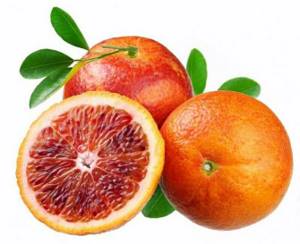Dietary properties:
How many calories are in an orange, what dietary properties it has, all this is of great interest to those who lead a healthy lifestyle and monitor their health and figure. So we will try to answer these questions in the next article.
So:
This citrus contains a large amount of vitamins, for example, vitamin A, B1, B2, PP. Among the minerals in its composition, magnesium, phosphorus, sodium, potassium, calcium and iron should be noted. But still, the main thing for which oranges, like other citrus fruits, are valued is vitamin C (ascorbic acid). 150 grams of this fruit contains 80 mg of ascorbic acid, which covers a person’s daily need for vitamin C.
How many calories does one fruit contain?
The calorie content of a fruit depends on its weight and thickness of the peel. Orange – calorie content 1 pc. is 36-43 kcal. Despite the fact that the peel of the fruit has greater nutritional value and an interesting taste with a spicy note, it is practically not eaten.
As a rule, the weight of one medium-sized orange is 100-120 grams. The peel of such fruits is quite thin, so after peeling the citrus fruit will weigh at least 80 grams. Based on the above information, the average calorie content of a fruit will not exceed 40 kcal.
But the largest oranges can reach a weight of 270 grams, so their energy value can be about 100 kcal in one copy.
Orange composition:
Vitamins:
| Vitamin: | WITH | IN 1 | AT 2 | AT 4 | AT 5 | AT 6 | RR | E |
| in mg. per 100 grams | 60.0 | 0.04 | 0.03 | 8.4 | 0.25 | 0.06 | 0.3 | 0.2 |
Minerals:
| Mineral: | Calcium | Phosphorus | Magnesium | Potassium |
| in mg. per 100 grams | 34 | 23 | 13 | 197 |
Oranges are good for the human body in general, and in particular for the digestive, endocrine, cardiovascular and nervous systems.
Consumption of this fruit helps speedy healing of wounds and abscesses, has a beneficial effect on the state of the nervous system, and normalizes its functioning.
Orange juice contains phytoncides. This explains its anti-inflammatory and antimicrobial properties. This juice is a good anti-scorbutic remedy. It stimulates all functions of our body, improves metabolism, tones. It is also useful for those who suffer from diabetes. It is recommended for vitamin deficiencies; as a means to help relieve fatigue. It improves appetite and quenches thirst well (especially during feverish conditions).
Oranges are an excellent dessert; they stimulate appetite in children and have general strengthening properties. Due to the presence of a rich set of vitamins and other biologically active substances in them, these fruits are recommended for the prevention and treatment of hypovitaminosis, liver diseases, diseases of the cardiovascular system, and metabolic disorders.
Contraindications
Despite the benefits of a citrus product for the body, its consumption can be harmful to health.
Contraindications for including oranges in the diet:
- severe forms of peptic ulcer and gastritis in the acute stage;
- chronic colitis and enteritis with regular relapses;
- hypersensitivity to the product or tendency to allergies;
- dental problems associated with enamel destruction;
- child's age up to 2 years;
- hepatitis in severe form.
During pregnancy and breastfeeding, the number of oranges consumed per day should be strictly controlled. Before doing this, you need to consult a specialist. Abuse during this period can provoke allergies in the child.
Elderly patients with thrombophlebitis and diabetes should also eat oranges in moderation to protect themselves from complications of pathologies.
If the recommendations are not followed, symptoms such as pain in the stomach and intestines, loose stools, heartburn, increased tooth sensitivity, rash, hyperemia and itching of the skin may appear. Such manifestations require immediate exclusion of the fruit from the diet.
Harm
Despite the high content of useful substances, excessive consumption of oranges can provoke an allergic reaction.
To avoid negative consequences, you should eat:
- children no more than 1 orange;
- adults 2-3 fruits.
In addition to being highly allergenic, the high content of natural acid has a destructive effect on tooth enamel, so dentists strongly recommend performing oral hygiene after each consumption of citrus fruits.
Nuances of use
For a healthy person, the optimal number of oranges per day is 3 pieces with a total weight of no more than 600 g. This will provide the body with the necessary substances and will not cause adverse reactions. Women during pregnancy and lactation should limit the norm to 1 piece of fruit per day, provided there are no contraindications. For older people, the daily norm is no more than 2 medium fruits.
The product should not be consumed on an empty stomach, so as not to provoke heartburn and gastritis, or immediately before bed. The diuretic effect of orange will interfere with normal sleep. It is recommended to eat citrus after meals during the day.
Those who adhere to a diet are allowed to increase the daily allowance to 4 oranges, subject to the limitation of sweets and white bread, as well as other fruits. The best option for losing weight would be to drink homemade orange juice, without added sugar. This product should be drunk after diluting it with water in a 2:1 ratio.
The daily intake of juice is 3 glasses. Consuming it will help increase fat burning and reduce body weight faster.

For weight loss, it is recommended to choose a Sicilian variety of fruit with red flesh. It has been proven that this particular type stimulates effective weight loss without harm to health. To enhance the effect, you can unload the body once every 7 days, provided there are no pathologies of the gastrointestinal tract or kidneys. On this day you are allowed to consume up to 1.5 kg of oranges, dividing the amount into 5-6 doses. Drinking 1-2 cups of green tea will enhance the benefits of the fasting day and help remove breakdown products of harmful substances from the body.
Benefits of juice

It is generally accepted that healthy natural juice is a drink for people struggling with excess weight. This is not entirely true. A good habit of starting the day with a glass of orange juice will benefit people suffering from high blood pressure due to hypertension, osteochondrosis, and diseases of the respiratory system.
If you have problems with the intestines, drinking orange juice in the morning on an empty stomach will help cope with the delicate problem of chronic constipation. Due to the high content of pectin in the fruit, it helps cleanse the body of toxins and stops “fermentation” in the large and small intestines.
After squeezing healthy juice from several oranges, it is recommended to drink it within a short time and not leave it for storage.
In this case, the useful and nutritious substances of the fruit are guaranteed to enter the body in full.
Calorie content of the product
An important piece of information to know about oranges is their calorie content. This parameter changes depending on the form in which the product is presented - with or without peel, in the form of juice or candied fruit. Indeed, a representative of citrus fruits is eaten not only in its natural form. It is often found in the following products:
- fresh juices;
- jams;
- essential oil;
- alcoholic and carbonated drinks.
This is why the number of calories in an orange must be considered individually for each option:
- No peel. Scientists have proven that the energy value of the fruit is low. The pulp of a representative of the citrus family contains only 43 kcal per 100 grams. Otherwise, the calorie content varies based on weight. If we consider that the mass of the fruit is 150 grams , then the calorie content of one orange without peel is approximately 63-65 kcal.
- With peel. Scientists have proven that the zest of the fruit also contains a certain proportion of useful substances. At the same time, its calorie content is 16 kcal/100 grams. The peel is often used to prepare essential oils (which will be discussed below). The zest also contains vitamin C, fats, sodium, potassium and other substances beneficial to the body. The peel is used to solve the following problems:
- rapid elimination of swelling;
facilitating the menstrual cycle;
- improving the functioning of the circulatory system;
- normalization of cholesterol levels in the blood.
The peel is also used in everyday life:
- in the form of a useful “toy” for your favorite animal;
- as a sedative;
- to light a fire and fill the room with pleasant smells;
- in order to get rid of various insects (the aroma of the crusts helps in this matter).
The calorie content of an orange without peel is lower, which is logical. At the same time, you should not throw away the zest. According to nutritionists, it has a beneficial effect on the functioning of the body. But you should be careful, because excessive intake of the product leads to allergic reactions. The total energy value of an average orange with zest is 79-81 kcal.

- protects against bleeding;
eliminates gum inflammation;
Essential oil is also used for cosmetic purposes. It gives a wonderful smell, strengthens hair, softens the skin. Masks that give the skin elasticity and moisturize it are widely used. And if the calorie content of 1 orange without peel is high, then you should not be afraid of it (due to use in minimal quantities)
The energy value of orange essential oil is 890 kcal/100 grams.

Is it possible to eat tangerines on a diet?
The most common varieties of tangerines on store shelves are Tangerine and Clementine, although the variety of this citrus is not limited to them. The sweetest varieties are Dancy, Robinson, Honey, Temple, Clementine and Mineola.
Moreover, the last two varieties are not considered “pure” tangerines, since they are hybrids obtained by crossing with orange and grapefruit. The listed types are very tasty, but they are not very suitable for diet due to their high glucose content.
For those losing weight, the Tangerine variety, which has a tart taste with a characteristic sourness, will be more preferable. It is advisable to buy fruits of this variety grown without additives or chemical treatments in Abkhazia or Turkey.
We are used to seeing tangerines as bright orange, but in fact their color spectrum is much wider. For example, the fruits of the Honey variety are also found in yellow and green colors. And the peel of the varieties Mineola, Tangor, Robinson and several others is orange-red.
Tangerines vary in size. The Clementine variety is distinguished by the smallest fruits. But Tangelo, which is a hybrid with grapefruit, reaches the size of an orange.











